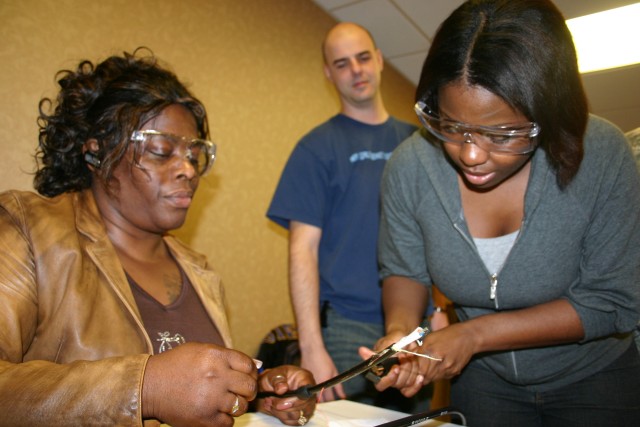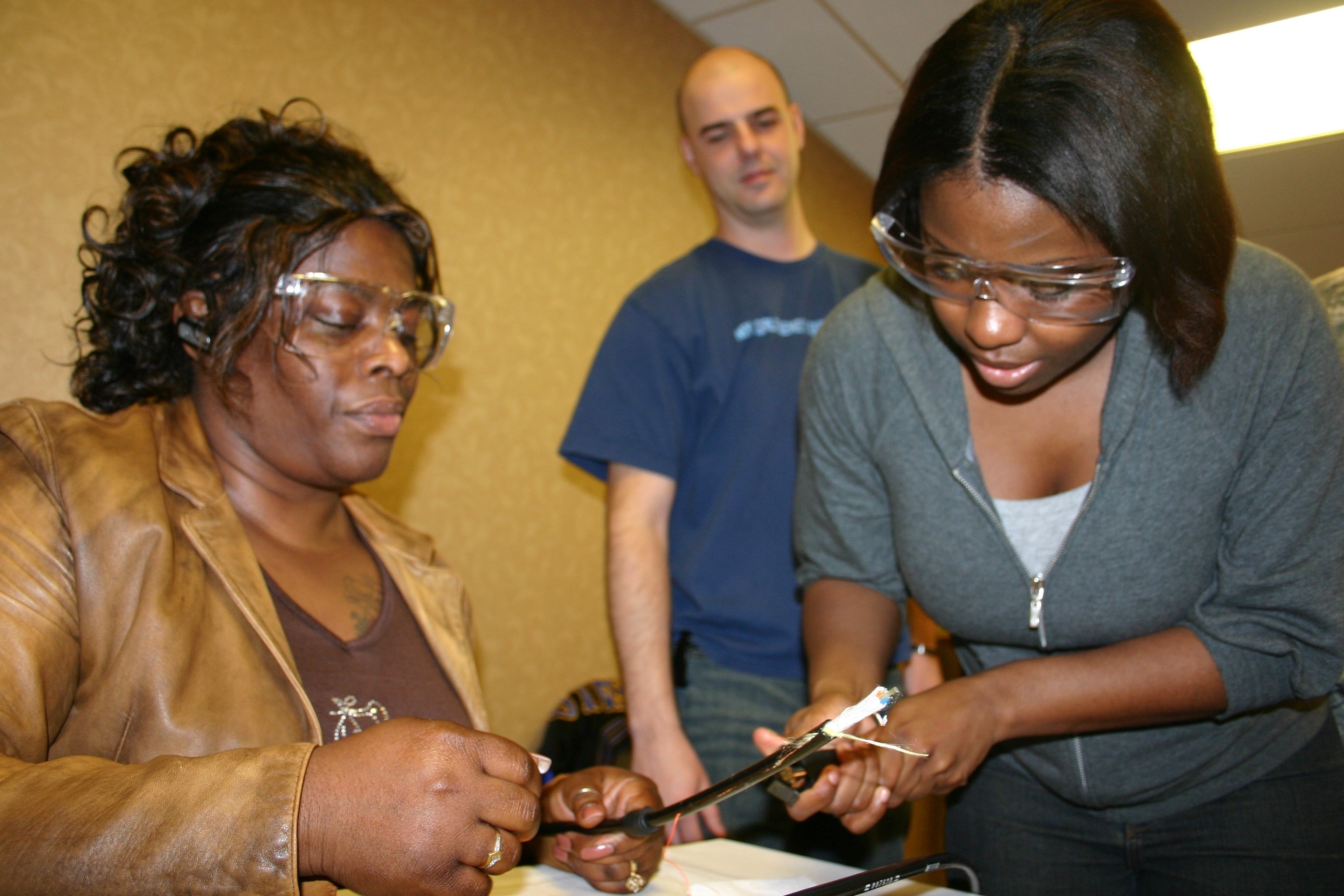
Fort Meade, Md. - A neighborhood may depend on Staff Sgt. Rodjean Thorman.
In her hand rests a thread so thin it barely merits being called a string. But this thread is a strand of optical fiber, capable of supporting the high-speed information needs of a small neighborhood.
To do that, the fiber must be clean, so the Fort Meade Warrior Transition Unit Soldier will spend the next five minutes carefully moving the tip of the fiber across a pad to clear off any errant debris.
It's slow work, and a far cry from what the Army medic used to do.
But that's the point.
As part of their road to recovery, about 20 Soldiers from Fort Meade participated in a new training course offered by the WTU from February through April 17. For six weeks, Soldiers learned about fiber optics, a field of science involving the manipulation of light. Fiber optics science can be applied commercially by using thread-like fibers to transmit information with a beam of light. The technology is increasingly used in telecommunications due to its ability to transmit large amounts of information, compared to traditional copper wires.
With its greater capacity to carry information, fiber optics will probably supplant copper wires in the future, said Spc. Jose Ramon, a student in the class. "Copper is just going to be used to make bullets," he said.
For people like Ramon who have experience with copper, it will take some adjustment to work with the thin fiber optic fibers, he said. "You just can' t pull this fiber," he said. "You can't be rough like me. You have to be delicate."
Learning how to handle and use fiber optic technology properly cost Ramon and other Soldiers about $3,000 each. That cost, however, was paid by the Army's tuition assistance program, said R.C. Fisher, an education and guidance counselor with the Soldier and Family Assistance Center who helped organize the training. "It's basically free education," he said.
These lessons weren't simply for students' own gratification. Students completed the class with 12 credits from Baker University in Wichita, Kan., and certification for handling fiber optics from Electronics Technicians Association International.
How they will use the knowledge and certification is unclear, though multiple participants described the education as either a back-up career or a field they'd like to move into. "It seems like something I would want to do; it's not the same thing every day in the same office," said Sgt. Jason Roden, a project manager for a research laboratory near Philadelphia. "I'm actually thinking about telling the old boss to take a hike."
As the class nears its end, 17 Soldiers have signed up for a new class that begins Monday, said Fisher.

Social Sharing